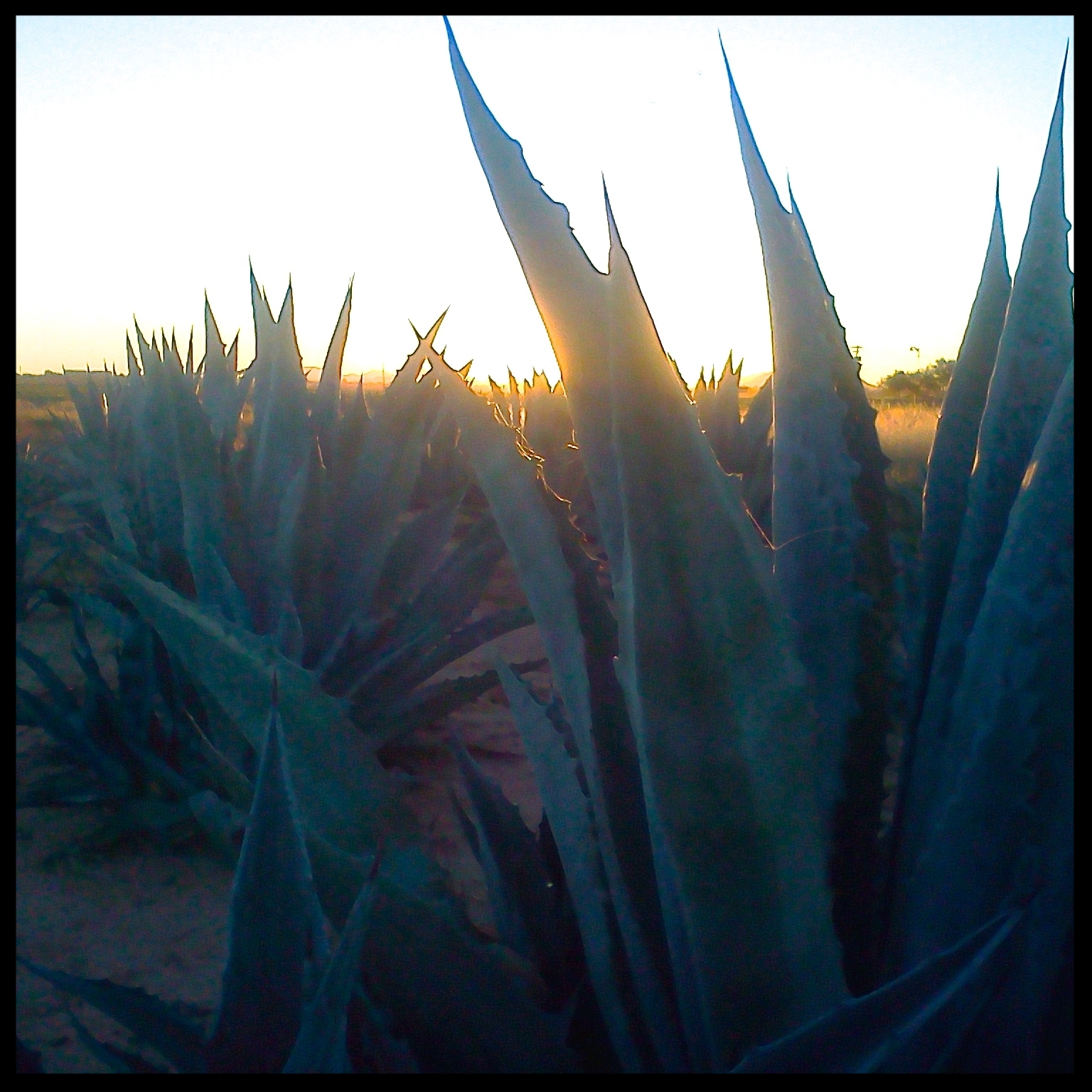CAM Plants for Advanced Bioenergy
Crassulacean Acid Metabolism (CAM) has evolved in plants as a strategy for achieving greater water use efficiency. Plants like Agave can be grown for fiber, sugar, and fuel with only a fraction of the water inputs that are needed for current crops grown in semi-arid regions.
Photosynthetic efficiency
We measure the carbon and water exchange in Agave to estimate physiological responses to climate variables.
Model development
We develop models for system level processing of Agave for bioenergy based on:
physiology
plant tissue chemistry
current fuel conversion technologies
Did you know?
CAM plants open stomata at night to take in carbon dioxide for photosynthesis when the temperatures are cooler.
Funding Sources: Energy Biosciences Institute, New Phytologist, Journal of Experimental Botany
Publications:
Davis SC, Ortiz-Cano H. 2023. Lessons from the history of Agave: ecological and cultural context for valuation of CAM. Annals of Botany https://doi.org/10.1093/aob/mcad072.
Davis SC. 2022. Agave americana: Characteristics and potential breeding priorities. Plants 11: 2305, https://doi.org/10.3390/plants11172305.
Davis SC, Abatzoglou JT, Lebauer DS. 2021. Expanded potential growing region and yield increase for Agave americana with future climate. Agronomy, 11(11): 2109, https://doi.org/10.3390/agronomy11112109.
Jones AM, Zhou Y, Held M, Davis SC. 2020. Tissue composition of Agave americana L. yields greater carbohydrates from enzymatic hydrolysis than advanced bioenergy crops. Frontiers in Plant Science 11: article 654.
Davis SC, Simpson J, Gil Vega KDC, Niechayev NA, van Tongerlo E, Hurtado Castano N, Dever LV, Búrquez A. 2019. Undervalued potential of crassulacean acid metabolism (CAM) for current and future agricultural production. Journal of Experimental Botany Special Issue on CAM. 70: 6521-6537. https://doi.org/10.1093/jxb/erz223
Niechayev N, Jones A, Rosenthal D, Davis SC. 2018. A model of environmental limitations on production of Agave americana L. grown as a biofuel crop in semi-arid regions. Journal of Experimental Botany. 70: 6549-6559. https://doi.org/10.1093/jxb/ery383
Davis SC, Kuzmick ER, Niechayev N, Hunsaker DJ. 2017. Productivity and water use efficiency of Agave americana in the first field trial as bioenergy feedstock on arid lands. Global Change Biology Bioenergy 9: 314-325. doi:10.1111/gcbb.12324
Davis SC, Ming R, Lebauer D, Long SP. 2015. Toward systems-level analysis of agricultural production from crassulacean acid metabolism (CAM): scaling from cell to commercial production. New Phytologist 208: 66-72.
Davis SC, LeBauer D, Long S. 2014. Light to liquid fuel: theoretical and realized energy conversion efficiency of plants using Crassulacean Acid Metabolism (CAM) in arid conditions. Journal of Experimental Botany (special issue: C4-CAM) 65: 3471-3478.
Davis SC and Long SP. 2014. Agave/Sisal, Chapter 9 in Industrial Crops: Breeding for BioEnergy & Bioproducts, M. Cruz and D. Dierig (Eds). Springer, New York. pgs 335-349.
Yang X, Cushman, Borland, Edwards, Wullschleger, Tuskan, Owen, Griffiths, Smith, De Paoli, Weston, Cottingham, Hartwell, Davis S
et al. 2015. A roadmap for research on crassulacean acid metabolism (CAM) to enhance sustainable food and bioenergy production in a hotter, drier world. New Phytologist 207:491-504.
Cushman JC, Davis SC, Yang X, Borland AM. 2015. Development and use of bioenergy feedstocks for semi-arid and arid lands.
Journal of Experimental Botany 66: 4177-4193 doi:10.1093/jxb/erv087.
Davis SC, FG Dohleman, SP Long. 2011. The global potential for Agave as a bioenergy feedstock. Global Change Biology Bioenergy 3:
68-78.


